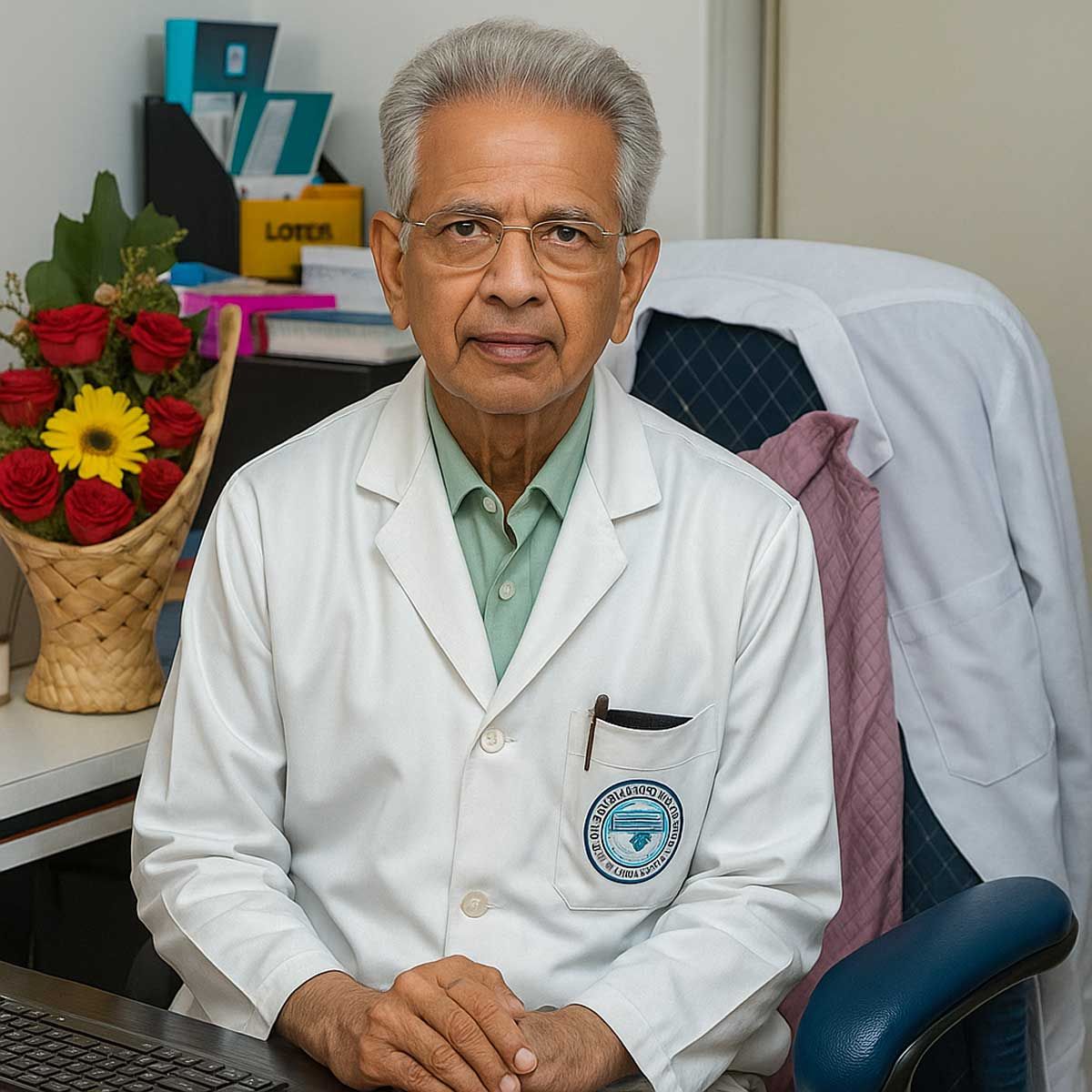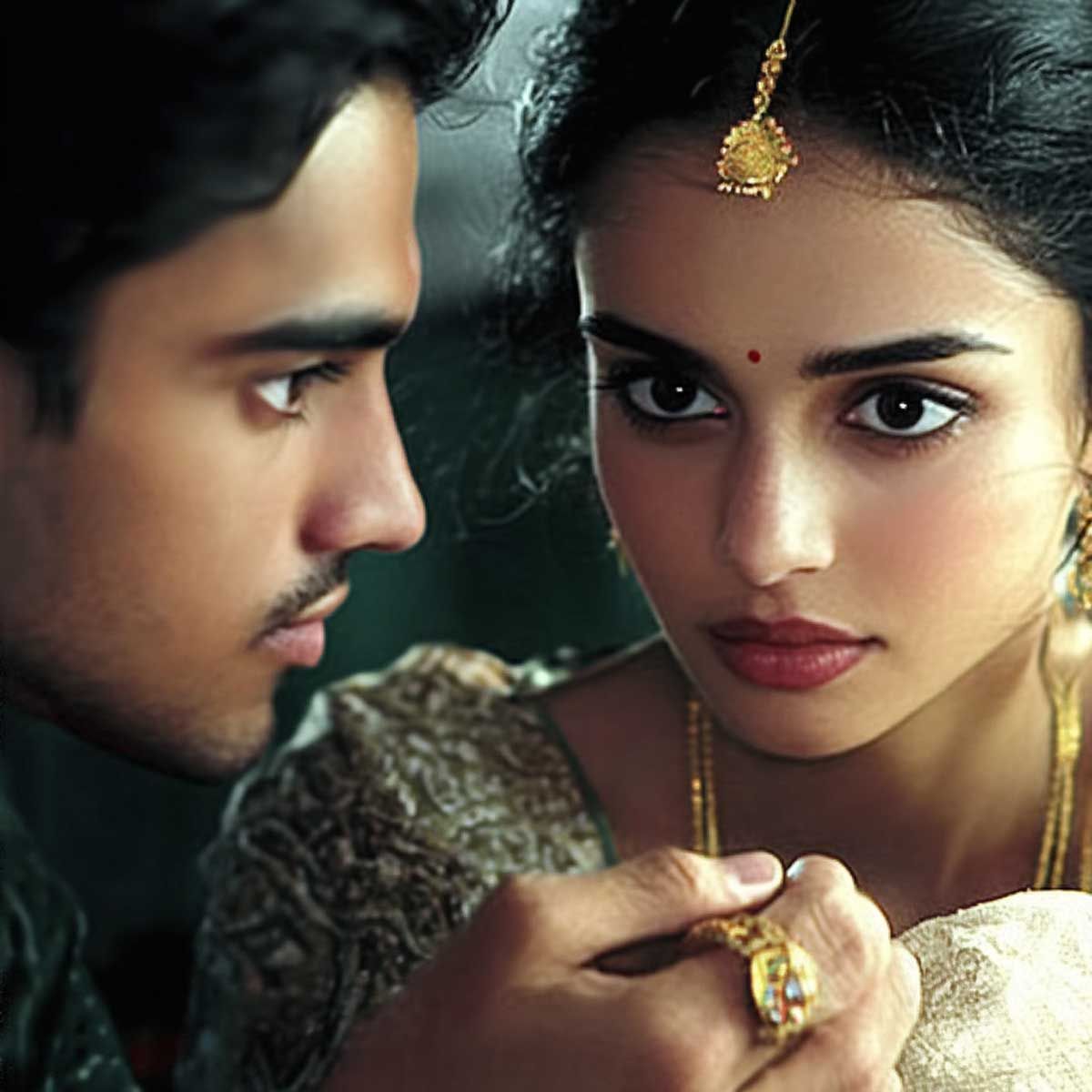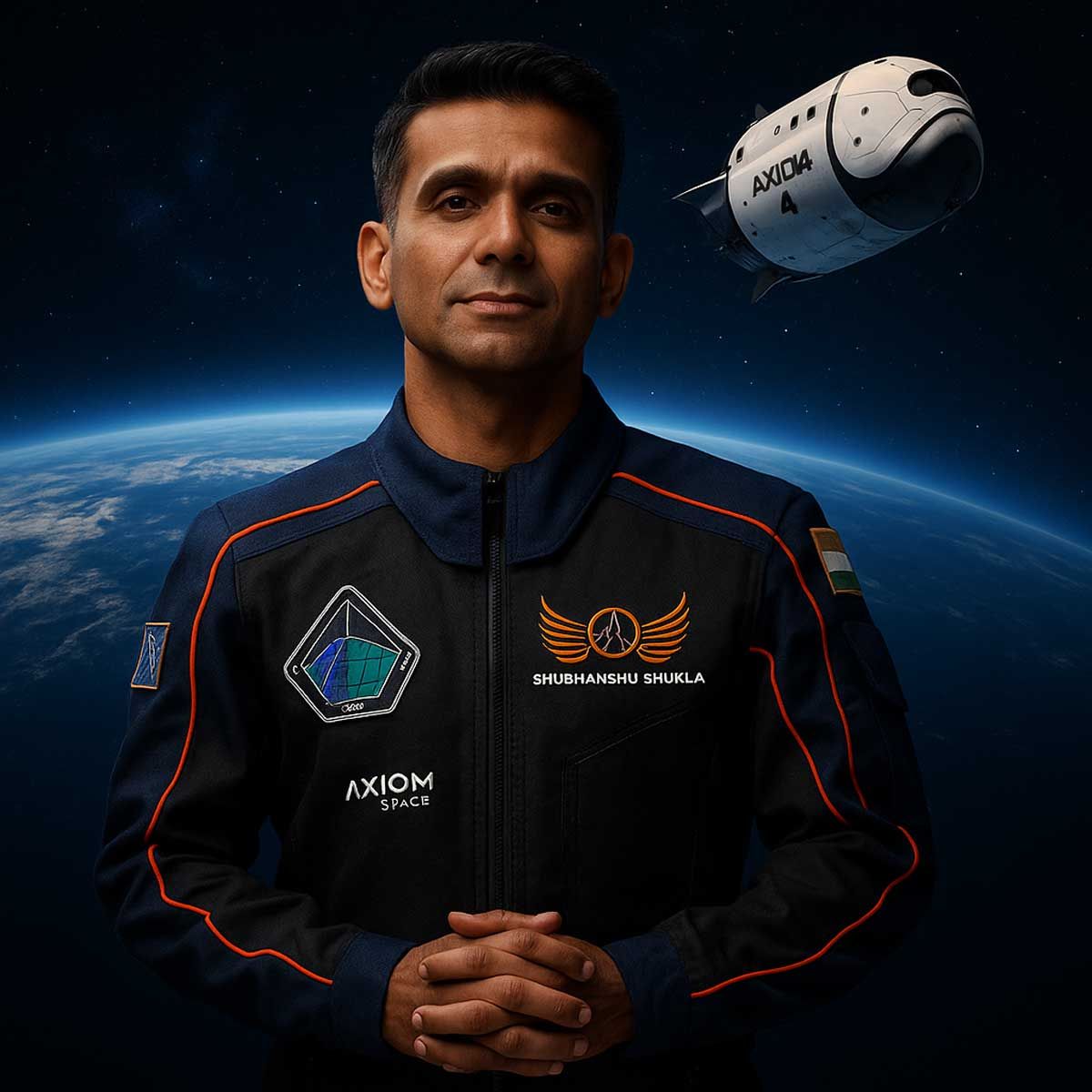More Coverage
Twitter Coverage
Satyaagrah
Written on
Satyaagrah
Written on
Satyaagrah
Written on
Satyaagrah
Written on
Satyaagrah
Written on
JOIN SATYAAGRAH SOCIAL MEDIA
"History stolen, heritage lost": Kundavai Jainalayam Temple of the Chola dynasty, suffers a profound loss with its ancient idol's theft, ex-IPS Pon Manickavel dives deep, revealing a maze of negligence, smuggling, and India's unguarded cultural heritage

Pon Manickavel, a respected and retired officer from the Indian Police Service (IPS) and the previous Inspector General of the Idol Wing, recently stepped into the spotlight, revealing shocking insights about the theft of a precious ancient idol. This wasn't just any idol. It hailed from the spiritually significant Kundavai Jainalayam temple in Tamil Nadu.
A piece of history, the temple was commissioned by Kundavai, the illustrious sister of the legendary Chola king, Raja Raja Chola. The inscriptions dating back to 1070 CE during the Chola dynasty's rule serve as timeless witnesses to the temple’s rich origins. Found in Polur, near the Thirumalai area in Tiruvannamalai, Tamil Nadu, the temple is more than just a structure; it's a testament to the profound historical and religious beliefs held by the Jain community.
|
Diving Deeper into The Jain Temple's Beauty | It's fascinating how this temple isn't just a standalone monument. The site features caves masterfully sculpted into a hill. And what makes it even more awe-inspiring? Alongside these caves stand two other temples from the 16th century, dedicated to the divine Neminatha and Vardhamana Mahavira. As one ventures further into the rock-cut shrines within these caves, they are greeted by art inspired by Jaina teachings, presumably from the 16th century. These artworks aren't just decorative; they narrate a story.
Central to this art is a representation of Jambudvipa, visualizing the continent which houses India, outlined as a grand circle. Inside this, the majestic Mount Meru stands, encapsulated in another circle. These art pieces are not just decorative but are detailed narratives. The "samavasarana" stands out as a recurring theme. Imagine a heavenly pavilion conjured by celestial beings as a celebration of a Jain Tirthankara achieving supreme knowledge. This sacred place offers wisdom to all - from heavenly beings to humans and even animals. The Tirthankara, surrounded by devoted disciples, takes the central stage in this narrative.
Yet, as captivating as these tales are, it's disheartening to note that the ravages of time have been unkind. Not all of the temple's ancient depictions have been preserved. Once-majestic portrayals of Jaina yakshas and yakshis have withered away, leaving Jivamalini as the only sentinel from a bygone era. However, all isn't lost. The sanctuaries' and antechambers' ceilings remain as resilient testimonies, showcasing meticulous textile patterns, elaborate geometric designs, and ornate depictions of geese, pearl festoons, and lotus petals, further embellishing the caves.
A Priceless Treasure Stolen | The crux of Manickavel’s revelations revolved around an idol. Not just any idol, but a 29-inch marvel, intricately designed, and deeply rooted in history. This masterpiece was pilfered from the very sanctum of the temple. And what's even more shocking? Preliminary evidence points to the theft happening around the year 2003. This idol wasn't just a figure; it was history incarnate, with links tracing back over 2,300 years. Inscriptions etched on the temple walls hark back to varying historical epochs. A closer look at the temple’s inscriptions reveals a story of it being the creation of the Chera king Ezhini. He ruled the area known as Vanji around 2000 years ago, which corresponds to the present-day Karur. This place boasts what's arguably the oldest temple site in the region, rumored to have the enigmatic Bogar temple beneath it.
The perplexing part of this tale? The Archaeological Survey of India now oversees the caves below this Jain temple. Yet, Manickavel couldn’t help but question the glaring oversight of state authorities. Why hadn’t they recognized this temple as one of the oldest? Why was there no acknowledgment of the existence of such an ancient idol within its walls? Questions abound, and the search for answers continues.
|
The Temple’s Storied Past
Raja Raja Chola's illustrious reign witnessed the construction of the temple during its 21st year, pinpointing its inception to roughly 1106 CE. This venerable temple has not only stood the test of time but has also been a canvas for a plethora of inscriptions, adding layers to its already rich history. Among those inscriptions, the temple holds tales from notable figures such as:
1. Paranthaka
2. Krishnadeva III of the mighty Rashtrakuta Empire
3. The grand Raja Raja Chola himself
4. His successor, Rajendra Chola
5. The generous Siddhabai, who made significant donations to the temple
Deepening the intrigue around this temple is its strong association with the Sangam era, a period known for its poetic wealth and cultural advancements. Within the architectural finesse of the temple, there lies a standout feature: the Vijayachakra, an emblematic symbol that is almost synonymous with Jain temples.
Manickavel’s Grave Concerns and Allegations
Pon Manickavel, a beacon in the quest against idol theft, has been unyielding in highlighting the temple's importance and the distressing tale of the missing idol. With a heavy heart, he spoke of a glaring lapse: authorities had been aware of the theft for a staggering twenty years, yet seemed inactive despite the glaring signs of the crime. His allegations, fraught with concern and dismay, pointed towards the temple's management, overseen by the Hindu Religious & Charitable Endowments Department of Tamil Nadu. The lack of a swift First Information Report (FIR) after the theft was a glaring oversight, especially given its critical role in addressing such crimes.
Furthering the tale of negligence and possible complicity, he revealed that this invaluable piece of history was sold for an almost unimaginable sum of 2.5 crores. Through his relentless investigations, Manickavel received intel suggesting the idol’s current resting place might be thousands of miles away in Manhattan. A certain Rajiv Chaudhary, residing luxuriously at Central Park West as of 2020, is believed to be in possession of this invaluable artifact.
The gravity of the situation seemed to intensify as Manickavel expressed his sheer exasperation at the inertia displayed by authorities. His gathered evidence pointed fingers not just at individual thefts but a more sinister network. A group, known under the seemingly benign name of the “Indo Nepal Art Centre” based in Bombay, is allegedly deeply entrenched in smuggling invaluable Indian artifacts.
Subash Kapoor, a name infamous in smuggling circles, is currently behind bars but is on the brink of tasting freedom. Under his umbrella, Vallabha Prakash and Aditya Prakash had previously faced the law, thanks to Manickavel’s efforts. Yet, their release only saw them plunging back into the murky world of smuggling. Surya Prakash, believed to be at the helm of the Indo Nepal Art Centre, remains a looming figure in this clandestine world.
|
For Manickavel, the fight isn’t just about the idols; it’s about upholding a nation’s pride. He advocates for a more ground-up approach, involving local police officers equipped with knowledge and insights specific to their regions. Citing a pivotal Supreme Court ruling spearheaded by Justice Sadasivam, he emphasized the immediate need to file FIRs in such pressing cases. His earnest plea was directed towards the Home Secretary of Tamil Nadu, urging him to be the bulwark that stands between India’s rich cultural heritage and those who wish to plunder it.
Unearthing the Negligence | With a fervent passion for justice and the preservation of India’s cultural gems, Manickavel brought forward some alarming revelations. He asserted, “For an astonishing six decades, the HR&CE (Hindu Religious and Charitable Endowments) department, despite their entrusted responsibilities, remained indifferent to the theft of the iconic Raja Raja Chola idol. Their startling apathy towards filing an FIR left the public betrayed. My endeavor to file the FIR became the catalyst for the idol’s retrieval. What's more astonishing is the blatant inaction of the then Chief Minister, who despite wielding significant power, made no concerted effort to recover the invaluable artifact. The true credit for its recovery, against such odds, belongs to us – the rank and file of the police force. Furthermore, even the intervention attempts by the central government bore no fruit as our actions were completely justified, and there was no legal framework that could challenge them."
As he delved deeper into the intricacies of the case, he alluded to a prominent family in the state, hinting at their contrasting priorities. "This very family harbors ambitions of erecting a grand memorial in their patriarch’s honor. The source of funding remains ambiguous – be it their political party, public coffers, or some other means. But what's genuinely perplexing is their seemingly evident oversight of an artifact of immense historical significance."
Determined to shed light on every facet of this convoluted case, he shared that his investigations had furnished detailed knowledge of the idol's theft, its current or recent location, the culprits behind the smuggling, and those who facilitated the sale. He elaborated, "After obtaining the idol, a certain Subash Kapoor went to great lengths to ascertain its authenticity by initiating a metallurgical analysis. I have concrete evidence that this analysis was undertaken by John Tweeley." His voice heavy with dismay, he asked a poignant question, "When I, despite my retirement, can garner about 90% of the requisite details concerning this theft, why has there been such glaring inertia on the part of local authorities?" His critique didn’t stop there. Drawing a simple yet impactful comparison, he remarked, “When even delivery personnel, say from Swiggy, or individuals like my personal driver, exhibit immense dedication in their work, it’s tragic to witness the lackluster commitment from certain department officials.”
Upon being quizzed by the press about his willingness to offer his expertise if requested, he responded with a resounding affirmation. He enlightened the press by stating, "The law bestows upon a magistrate the authority to enlist the services of someone, even if they aren't a police officer."
Addressing a potential misrepresentation that could arise from his revelations, Manickavel wanted to set the record straight. He humorously remarked about the possibility of the media misconstruing the historical tidbit of Kundavai Piratiyar converting to Jainism if his interview made its way to platforms like YouTube. With earnestness, he clarified that the siblings were devout followers of Saivism, as corroborated by historical inscriptions. He emphasized the harmonious religious atmosphere of the era, highlighting the absence of any religious animosity between Raja Raja Chola and the Jain community.
The theft from Kundavai Jainalayam Temple serves as a distressing testament to the uphill battle in preserving the rich tapestry of India’s cultural and historical lineage. Manickavel’s unwavering commitment to the cause is inspiring, as he pledged to champion public causes throughout his life. He made it abundantly clear that his decision to approach the media before the police was a strategic move, intending to expedite the recovery process. With utmost sincerity, he clarified that his press briefing wasn't to vilify any individual or party, but solely to aid in the recovery of the stolen idol and restore a fragment of India's glorious past.
 Support Us
Support Us
Satyagraha was born from the heart of our land, with an undying aim to unveil the true essence of Bharat. It seeks to illuminate the hidden tales of our valiant freedom fighters and the rich chronicles that haven't yet sung their complete melody in the mainstream.
While platforms like NDTV and 'The Wire' effortlessly garner funds under the banner of safeguarding democracy, we at Satyagraha walk a different path. Our strength and resonance come from you. In this journey to weave a stronger Bharat, every little contribution amplifies our voice. Let's come together, contribute as you can, and champion the true spirit of our nation.
 |  |  |
| ICICI Bank of Satyaagrah | Razorpay Bank of Satyaagrah | PayPal Bank of Satyaagrah - For International Payments |
If all above doesn't work, then try the LINK below:
Please share the article on other platforms
DISCLAIMER: The author is solely responsible for the views expressed in this article. The author carries the responsibility for citing and/or licensing of images utilized within the text. The website also frequently uses non-commercial images for representational purposes only in line with the article. We are not responsible for the authenticity of such images. If some images have a copyright issue, we request the person/entity to contact us at This email address is being protected from spambots. You need JavaScript enabled to view it. and we will take the necessary actions to resolve the issue.
Related Articles
- Malaysia and Singapore are allowing temple entry with Covid protocols but here in Tamil Nadu, India Devotees are denied entry to Palani temple on Thaipusam festival: Thaipusam is an important festival of the Tamil community
- "Control your own destiny or someone else will": In a shocking incident, a Dikshitar of the revered Chidambaram Temple in Tamil Nadu assaulted by female police officer, HR&CE officials climb atop Kanagasabai medai while trying to take over mandir forcibly
- "Hatred is the coward's revenge for being intimidated": Descendants Of Vijayanagara Empire who reconstructed Chidambaram Natarajar Temple condemn TN Govt, “Give up politics of hatred against Deekshitars who are hereditary owners of the temple"
- DMK government in Tamil Nadu boasted that temple land worth Rs.2600 crore has been recovered and even launched a book giving details about it, temple lands amount to 5.25 lakh acres: Activist busts HRCE propaganda
- HRCE officials replacing hereditary pujaris with Crash course non-brahmins under the pressure of Christians and Leftist NGOs in Tamil Nadu temple: Breaking the age-old sampradaya to hurt Hindu Dharma
- HRCE flexes muscles to arrest a YouTuber Karthik Gopinath for collecting funds to restore murtis vandalized in an HRCE controlled temple, had moved funds to Padma Shri famed sculptor VK Munusamy to build the broken statues
- DMK Govt’s move to take over the Ayodhya mandapam using Tamil Nadu HRCE department failed utterly after Madras HC set aside the order: Dravidianists had a meltdown over a win for Hindus
- DMK banned 500-year-old ritual of ‘Pattina Pravesam’ at Dharmapuram mutt in Tamil Nadu: Madhurai Adheenam claims threat to life after he accused MK Stalin-led govt of encroaching rights of Hindu temples
- "Temples are sacred, not tourist spots": Madras High Court declares TN temples off-limits for non-Hindus, Justice S. Srimathy ordered HR&CE for Installing boards, affirming Hindu rights to worship freely, setting a precedent for religious practice respect
- Temple land in Thiruvannamalai, once a sanctum of spirituality, now besieged by the rise of an ugly shopping complex, devotees decry the greed of @tnhrcedept officials, as heritage is bartered for commerce, endangering the venerable East Gopuram
- "आक्रोश": Madurai erupts as thousands of Hindus unite to defend the sacred Thiruparankundram Murugan Temple from Islamist encroachment, reinforced by the 1931 Privy Council ruling affirming the temple's ownership, leading to massive protests
- "Abandoned homes become magnets for vandalism and crime": Tamil Nadu HRCE Board, trusted with the protection of temples is vandalizing temple sculptures in name of modern construction, greed for Civil Contracts resulted in shocking renovation works
- "Soul has this proof of divinity: that divine things delight it": Tungnath Mandir - highest of the Paanch Kedar and one of the highest Shiva Temples in the world lies at an altitude of over 12000 ft. with its origin dating back to the time of Mahabharata
- Order of banning loudspeaker in hawanshala is taken back by Ambaji Mandir administration: Gujarat
- "Vision looks upward and becomes faith": Pavagadh Shakti Peeth redeveloped and reclaimed after shifting dargah built atop it, 'shikhar dhwaj’ after 500 years symbolizes that centuries pass by, generations go by, but faith remains unshakeable




























